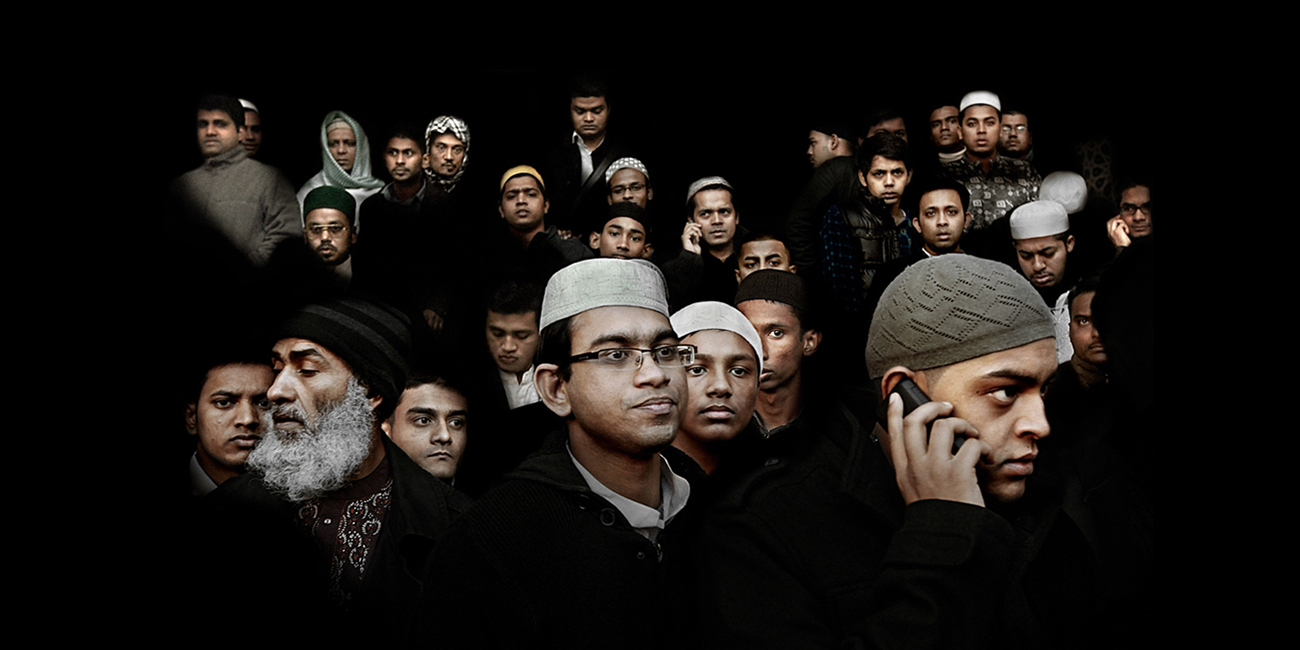
Creators of Photography Projects About Islam On Consequences Of Charlie Hedbo Attacks
A terrorist attack in Paris on January 7th, 2015 left at least 12 people dead at the office of the French satirical weekly, Charlie Hebdo. The event triggered a great discussion about Muslims living in Europe and the USA. Bird In Flight spoked to Bharat Choudhary, Emine Ziyatdinova, Meeri Koutaniemi, Claire Beckett and Fanny Sarri, who have shot projects about Islam in various counties, and asked them how this incident would affect the lives the subjects of their work.
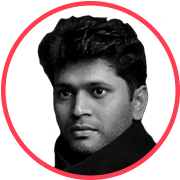
The Silence of ‘Others’ documents the experience of young Muslims in Western countries. Working in America, England and France, I am recording intimate accounts of living as a Muslim in the West and revealing how the external world is influencing Muslim social identities, positioning and relationships.
I am not a Muslim but the ceaselessly deepening chasm between Muslims and non-Muslims concerns me immensely. It pains me to observe how an unhealthy obsession with the ‘war against terror’ has given birth to a perpetual climate of paranoia and xenophobia, and how a resentful minority section of Muslim youth in the West has begun to heed the pied pipers of Islamic jihad. Expert solutions are being offered on how to effectively ‘integrate’ young Muslims in Western societies. But I think it is more important to analyze why has the need arisen to ‘integrate’ people who were born and belong to these countries.
{ “img”: “/wp-content/uploads/2015/01/bharat_01.jpg”, “alt”: “Bharat Choudhary 1” },
{ “img”: “/wp-content/uploads/2015/01/bharat_02.jpg”, “alt”: “Bharat Choudhary 2” },
{ “img”: “/wp-content/uploads/2015/01/bharat_03.jpg”, “alt”: “Bharat Choudhary 3” },
{ “img”: “/wp-content/uploads/2015/01/bharat_04.jpg”, “alt”: “Bharat Choudhary 4” },
{ “img”: “/wp-content/uploads/2015/01/bharat_05.jpg”, “alt”: “Bharat Choudhary 5” },
{ “img”: “/wp-content/uploads/2015/01/bharat_06.jpg”, “alt”: “Bharat Choudhary 6” },
{ “img”: “/wp-content/uploads/2015/01/bharat_07.jpg”, “alt”: “Bharat Choudhary 7” }
Violence, of any kind, has to be condemned and there can never be a justification for killing unarmed human beings. The incident in Paris is a sad reminder of the social, political, cultural and religious mess that we all are living in today. Fortunately, the media has responded in a much balanced and professional manner – equally respected both “Je sui Charlie” and “Je sui Ahmed”. Where we have seen numerous reports flogging the cowardly attacks on Charlie Hebdo, we have also seen excellent reports debating the freedom of free speech and criticizing the hypocrisy of Western governments. Some leading publications, like The New Yorker and Foreign Policy, have also carried thoughtful articles that attempt to dissect the complexity of the situation and simultaneously chastise so many of us who selectively grieve for one set of individuals and conveniently choose to ignore another set of victims.
Globally, the image or perception of Muslims and Islam is already in tatters and this incident has just added more fuel to the already raging fire of hatred. People I photographed in France are more than shocked and grief-stricken, they are disappointed. Such incidents make a sane or balanced debate absolutely impossible, overshadowing voices of so many individuals who call for a more rational and critical understanding of the issues of Muslims in the West. Such individuals will now be labeled as sympathizers of terrorists. Everything and everyone is being viewed through a black-and-white lens; you are either with them or with us. For Muslims in France, it has never been easy and this incident is going to make things more difficult for them.
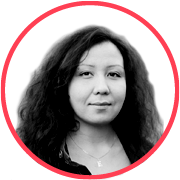
As an exchange student, I stayed with a family in Washington DC in 2010 with an overly nice lady in her late 50’s who lived in very good neighborhood with her son and 4 cats she adopted from a shelter. She liked fruit smoothies for breakfast, Ben and Jerry’s sorbet, and organic food. She also liked to take in exchange students, not only because it is a way to get some extra money, but also because it made her feel good about showing the American world to foreigners. She had only one rule – no Muslim students. My response was, “I am actually a Muslim too.” She replied after a second, “You know what I mean. Real Muslims….”
I have never doubted that I am Muslim. I believe in Allah and his wise prophet Mohhamed. I pray before going to bed and I want to be burried in the Muslim tradition. And I believe that in the end religion comes down to interpretations and traditions. So I do not think that my religion conflicts with my lifestyle, profession, or the way I spend my free time. But to fit the image in peoples’ heads every time I describe my religious identity, I add “liberal,” “ethnic,” “not practicing,” “improper,” “postsoviet,” and “yeah I drink alcohol and try not to eat pork.”
{ “img”: “/wp-content/uploads/2015/01/ziyatdinova_01.jpg”, “alt”: “Emine Ziyatdinova 1” },
{ “img”: “/wp-content/uploads/2015/01/ziyatdinova_02.jpg”, “alt”: “Emine Ziyatdinova 2” },
{ “img”: “/wp-content/uploads/2015/01/ziyatdinova_03.jpg”, “alt”: “Emine Ziyatdinova 3” },
{ “img”: “/wp-content/uploads/2015/01/ziyatdinova_04.jpg”, “alt”: “Emine Ziyatdinova 4” },
{ “img”: “/wp-content/uploads/2015/01/ziyatdinova_05.jpg”, “alt”: “Emine Ziyatdinova 5” },
{ “img”: “/wp-content/uploads/2015/01/ziyatdinova_06.jpg”, “alt”: “Emine Ziyatdinova 6” },
{ “img”: “/wp-content/uploads/2015/01/ziyatdinova_07.jpg”, “alt”: “Emine Ziyatdinova 7” },
{ “img”: “/wp-content/uploads/2015/01/ziyatdinova_08.jpg”, “alt”: “Emine Ziyatdinova 8” },
{ “img”: “/wp-content/uploads/2015/01/ziyatdinova_09.jpg”, “alt”: “Emine Ziyatdinova 9” },
{ “img”: “/wp-content/uploads/2015/01/ziyatdinova_10.jpg”, “alt”: “Emine Ziyatdinova 10” },
{ “img”: “/wp-content/uploads/2015/01/ziyatdinova_11.jpg”, “alt”: “Emine Ziyatdinova 11” },
{ “img”: “/wp-content/uploads/2015/01/ziyatdinova_12.jpg”, “alt”: “Emine Ziyatdinova 12” }
The events in Paris are tragic, but the media responses to the terror act brought up discussions about the religious identity – again. The public screams loudly through Facebook, Twitter and news websites: “Either you or your family do not fit our image of Islam. But your Muslim identity is enough to apply government anti-terrorist politics. So it’s no surprise if the FSB would knock on the door of your parents’ home to search for Islamic literature.”
Reading the news on Twitter that Lavrov and a bunch of other big names in politics would attend the Unity March in Paris, my friend makes a point that human rights activists can use this as a tool to fight for freedom of the press in Russia. From my view, it is a justification for the Russian government to prosecute Crimean Tatars in Crimea.
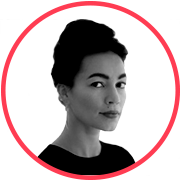
After the brutal wars in Chechnya many refugees crossed the Eastern border to Finland and started the long bureaucratic process to get permission to stay. The photo project Don’t Bury Me Here tells the story of three men and three women who live in Finland with different human status in official folders. It speaks of the convictions made in the offices, which will define their possibilities to carry on their lives.
{ “img”: “/wp-content/uploads/2015/01/meeri_03.jpg”, “alt”: “Meeri Koutaniemi 1” },
{ “img”: “/wp-content/uploads/2015/01/meeri_02.jpg”, “alt”: “Meeri Koutaniemi 2” },
{ “img”: “/wp-content/uploads/2015/01/meeri_01.jpg”, “alt”: “Meeri Koutaniemi 3” },
{ “img”: “/wp-content/uploads/2015/01/meeri_04.jpg”, “alt”: “Meeri Koutaniemi 4” },
{ “img”: “/wp-content/uploads/2015/01/meeri_05.jpg”, “alt”: “Meeri Koutaniemi 5” },
{ “img”: “/wp-content/uploads/2015/01/meeri_06.jpg”, “alt”: “Meeri Koutaniemi 6” }
We keep falling to stereotypes and to narrow-minded images while reporting from different social, political or ethic groups. Frequently I feel that especially with Muslims the media is more careful to push new visual narration to widen the conception of Islam.
The response from the Western media has been hypocritical. It is disgusting and inhuman to see how much less attention and care the media gave to the brutal bombings in Nigeria than to the deaths of the white people, who nevertheless, deserve all the grief and respect from all of us.
Right wing extremists and racist parties are using the devastating lost we faced in France to raise more prejudices and hatred towards Muslims. It is extremely important now to share information about the diversity of Muslims, and push people understand how the killers were part of extremists who don’t have anything in common with 99.9 percent of the world’s Muslims, or their point of views.
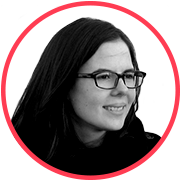
The Converts is a project that explores the experiences of individual Americans who have converted to Islam. Pictured in the project are women and men who were not born into families practicing Islam, but have themselves chosen the faith. The Converts examines one aspect of American identity: in a society that constructs ‘American’ and ‘Muslim’ as diametrical opposites, what it the experience of people who have traversed this line?
I am not a Muslim convert, and prior to embarking on this project I did not personally know any converts. I observed of the way that Muslims (or ‘Muslim-looking’ people) were treated in the United States in the immediate aftermath of 9/11. I was in my early 20’s at the time, and seeing the bigotry and hatred directed at Muslims really caught my attention. It took me a long time to figure out how to deal with these ideas in my work, and it wasn’t until I’d had a series of other experiences with Muslims, including living in a mixed Christian, Animist, Muslim community in Benin, West Africa.
{ “img”: “/wp-content/uploads/2015/01/beckett_01.jpg”, “alt”: “Claire Beckett 1”, “text”: “Imam Suhaib Webb, 2012.” },
{ “img”: “/wp-content/uploads/2015/01/beckett_02.jpg”, “alt”: “Claire Beckett 2”, “text”: “The Ninety-Nine Names of God, 2012.” },
{ “img”: “/wp-content/uploads/2015/01/beckett_03.jpg”, “alt”: “Claire Beckett 3”, “text”: “Robby, 2013.” },
{ “img”: “/wp-content/uploads/2015/01/beckett_04.jpg”, “alt”: “Claire Beckett 4”, “text”: “Prayer beads collection, 2013.” },
{ “img”: “/wp-content/uploads/2015/01/beckett_05.jpg”, “alt”: “Claire Beckett 5”, “text”: “April and her daughter Sarah, 2013.” },
{ “img”: “/wp-content/uploads/2015/01/beckett_06.jpg”, “alt”: “Claire Beckett 6”, “text”: “Mary, 2012.” },
{ “img”: “/wp-content/uploads/2015/01/beckett_07.jpg”, “alt”: “Claire Beckett 7”, “text”: “Hans and his teacher Lokman Efendi, 2013.” },
{ “img”: “/wp-content/uploads/2015/01/beckett_08.jpg”, “alt”: “Claire Beckett 8”, “text”: “Women’s section of the prayer hall, Naksibendi Hakkani Dergahi, 2013” }
Like any minority group, Muslim Americans face a general lack of understanding on the part of non-Muslim Americans. This results in stereotyping in both the news media (for example, a call to profile all Muslims on Fox News) and in entertainment media (think of the ubiquitous brown-skinned ‘jihadi’ villain). Muslims in America may be facing multiple bias both in the media and in their everyday lives.
While I would not like to speak for my Muslim friends, or for the people that I have photographed, the recent events in Paris have certainly had their impact. They are writing a great deal on social media about what has happened in Paris and what the response should be as a Muslim. Also, there is concern about properly representing Islam. Generally my friends are making the point that what happened in Paris was the work of criminals, that mainstream Islam prohibits violence, and that these extremists do not speak for ordinary Muslims such as themselves.
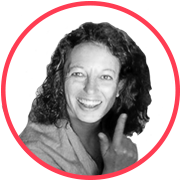
Muslim presence is growing in European cities, which may cause discomfort among parts of non-Muslim populations that, under the influence of the media, increasingly tend to see Muslims as a threat. Comparatively lower ages of starting a family, higher birth rates, as well as a second or third immigrant generation sometimes going back to conspicuous Islamic practices (which had been rejected by many of their parents when they first settled in the West), may also be adding to the rise in suspicion among non-Muslims. At the same time, a swelling number of Europe’s Muslims feel they are victims of explicit or implicit Islamophobia and turn to religious principles to construct meaningful identities. The overwhelming majority of them would agree that faith is one thing and fanaticism another.
Thirty years ago I was surprised to see hundreds of cheap Qurans publications spread on canvases on the floor of Parisian metro stations. My quest started then and has never since ceased. Through wars and peace, bitterness and joy, I travelled and travelled, though Islam and Islams, Greece and the Balkans, Western Europe and the Middle East, again and again, always divided between the urge, on the one hand, to capture that momentary blend of human light and shade, and my caution, on the other, not to astonish, hurt or insult.
{ “img”: “/wp-content/uploads/2015/01/sarri_01.jpg”, “alt”: “Fanny Sarri 1” },
{ “img”: “/wp-content/uploads/2015/01/sarri_02.jpg”, “alt”: “Fanny Sarri 2” },
{ “img”: “/wp-content/uploads/2015/01/sarri_03.jpg”, “alt”: “Fanny Sarri 3” },
{ “img”: “/wp-content/uploads/2015/01/sarri_04.jpg”, “alt”: “Fanny Sarri 4” }
My quest is a Muslim who leads his or her existence according to books, traditions and practices. Islam and Islams, God and Gods, the Ideal and ideals, by-the-book practice and ‘heresy,’ notions and feelings of purity, mixture, admixture, very often in a spiral of interchangeable positions, all conspire to urge my intellect, my heart, my eye, to see. In times when ‘jihad’ has become a commonplace term and a tangible fear (of a largely intangible, obscure thing), I photograph Islam and Muslims in Europe. I try to say that by looking we may well discover things are not what they seem to be. I work this theme, because I want to give another image of the good, everyday, Islam and Islams. But I do not know what will happen now, after the terrorist attack in Paris.
New and best




